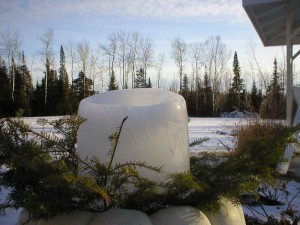From Liquid to Solid and Back Again

Originally appears in the Winter 2015 issue
IF YOU ARE LOOKING FOR a fun hands-on activity to do in the winter, look no further. Making an ice lantern is simple, inexpensive, and provides ample opportunity for cross-curricular lessons. This activity can be used in a number of settings: Children can make them at home, with their families, to decorate the front porch for the winter. Community centers can decorate for special events or the holiday season. Last but not least, and the focus of this article, teachers can use this simple activity as the starting point of an interdisciplinary project that incorporates varied subjects such as math, science, social studies and/or language arts.
This article provides step-by-step instructions on how to make an ice lantern, as well as instructional ideas for the classroom. Creating an ice lantern is a simple way to introduce students to the unique properties of water, states of matter, and phase changes. The depth to which this topic is explored will vary by age and grade level of the students, suggested activities included in this article will focus on grades 3-6. Young children may be asked to simply observe that water is a liquid and ice is a solid, whereas older students can discuss and explore, more specifically, when this phase change occurs (freezing point and melting point).
This activity gives students an opportunity to get outside and see, first hand, how science and the natural world work.
To view the photo-rich magazine version, click here.
If you are not already a subscriber, please subscribe to read the full article
Kimberly Yates is a professor in the Department of Teacher Education at Northern Kentucky University, teaching middle grades science methods and environmental education.
Leave a Reply
You must be logged in to post a comment.





